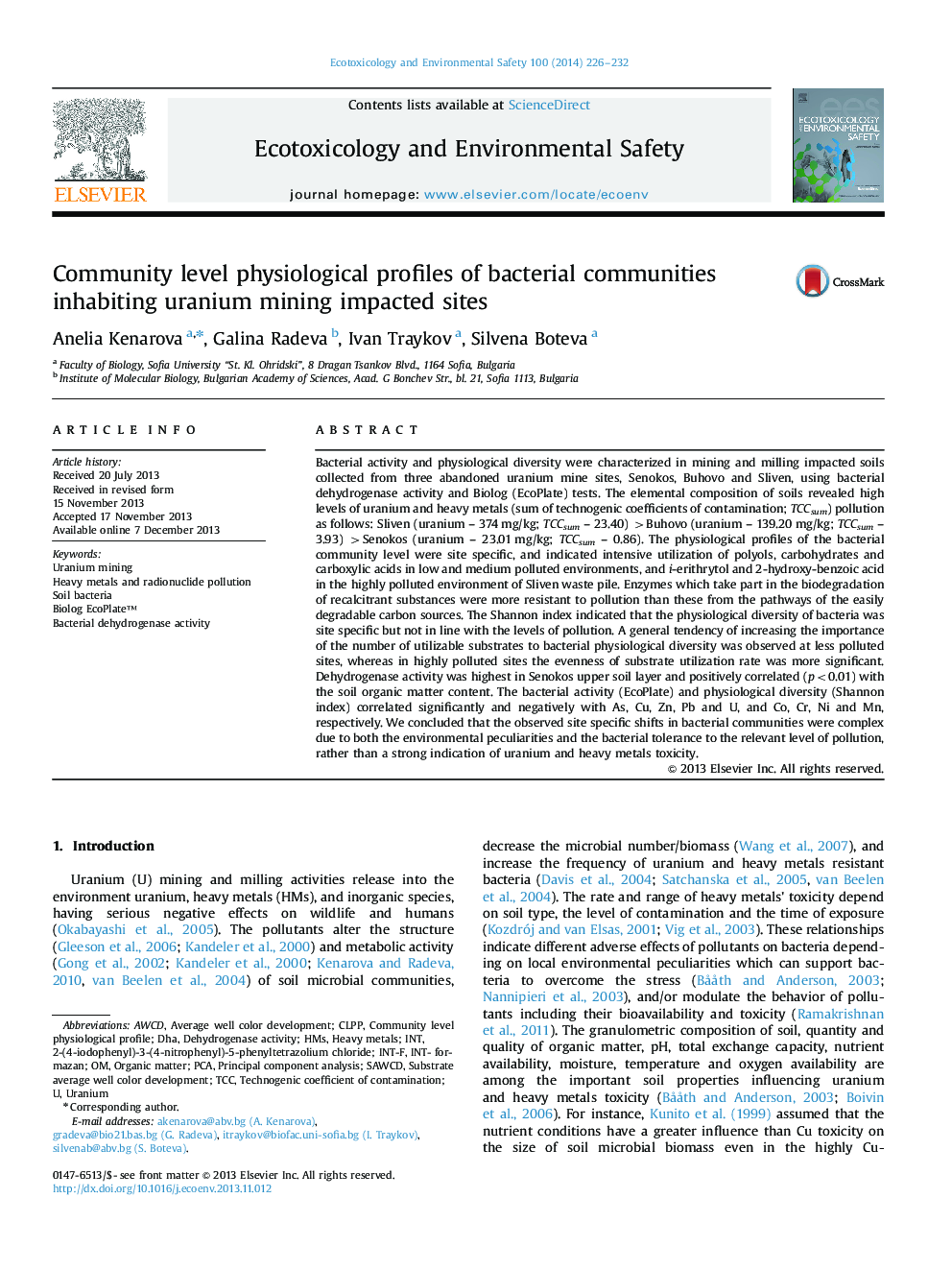| کد مقاله | کد نشریه | سال انتشار | مقاله انگلیسی | نسخه تمام متن |
|---|---|---|---|---|
| 6312256 | 1618963 | 2014 | 7 صفحه PDF | دانلود رایگان |
عنوان انگلیسی مقاله ISI
Community level physiological profiles of bacterial communities inhabiting uranium mining impacted sites
ترجمه فارسی عنوان
پروفایل های فیزیولوژیکی در سطح جامعه از جوامع باکتری در محل های معدنی تحت تاثیر معادن اورانیوم قرار دارند
دانلود مقاله + سفارش ترجمه
دانلود مقاله ISI انگلیسی
رایگان برای ایرانیان
کلمات کلیدی
Average well color developmentAWCD2-(4-iodophenyl)-3-(4-nitrophenyl)-5-phenyltetrazolium chlorideCLPPintHMSTCCPCA - PCAUranium - اورانیومSoil bacteria - باکتری خاکPrincipal component analysis - تحلیل مولفههای اصلی یا PCADHA - دوکوساهگزائنوئیک اسیدDehydrogenase activity - فعالیت دهیدروژنازHeavy metals - فلزات سنگینorganic matter - ماده آلیCommunity level physiological profile - مشخصات فیزیولوژیکی در سطح جامعهUranium mining - معدن اورانیوم
موضوعات مرتبط
علوم زیستی و بیوفناوری
علوم محیط زیست
شیمی زیست محیطی
چکیده انگلیسی
Bacterial activity and physiological diversity were characterized in mining and milling impacted soils collected from three abandoned uranium mine sites, Senokos, Buhovo and Sliven, using bacterial dehydrogenase activity and Biolog (EcoPlate) tests. The elemental composition of soils revealed high levels of uranium and heavy metals (sum of technogenic coefficients of contamination; TCCsum) pollution as follows: Sliven (uranium - 374Â mg/kg; TCCsum - 23.40) >Buhovo (uranium - 139.20Â mg/kg; TCCsum - 3.93) >Senokos (uranium - 23.01Â mg/kg; TCCsum - 0.86). The physiological profiles of the bacterial community level were site specific, and indicated intensive utilization of polyols, carbohydrates and carboxylic acids in low and medium polluted environments, and i-erithrytol and 2-hydroxy-benzoic acid in the highly polluted environment of Sliven waste pile. Enzymes which take part in the biodegradation of recalcitrant substances were more resistant to pollution than these from the pathways of the easily degradable carbon sources. The Shannon index indicated that the physiological diversity of bacteria was site specific but not in line with the levels of pollution. A general tendency of increasing the importance of the number of utilizable substrates to bacterial physiological diversity was observed at less polluted sites, whereas in highly polluted sites the evenness of substrate utilization rate was more significant. Dehydrogenase activity was highest in Senokos upper soil layer and positively correlated (p<0.01) with the soil organic matter content. The bacterial activity (EcoPlate) and physiological diversity (Shannon index) correlated significantly and negatively with As, Cu, Zn, Pb and U, and Co, Cr, Ni and Mn, respectively. We concluded that the observed site specific shifts in bacterial communities were complex due to both the environmental peculiarities and the bacterial tolerance to the relevant level of pollution, rather than a strong indication of uranium and heavy metals toxicity.
ناشر
Database: Elsevier - ScienceDirect (ساینس دایرکت)
Journal: Ecotoxicology and Environmental Safety - Volume 100, February 2014, Pages 226-232
Journal: Ecotoxicology and Environmental Safety - Volume 100, February 2014, Pages 226-232
نویسندگان
Anelia Kenarova, Galina Radeva, Ivan Traykov, Silvena Boteva,
